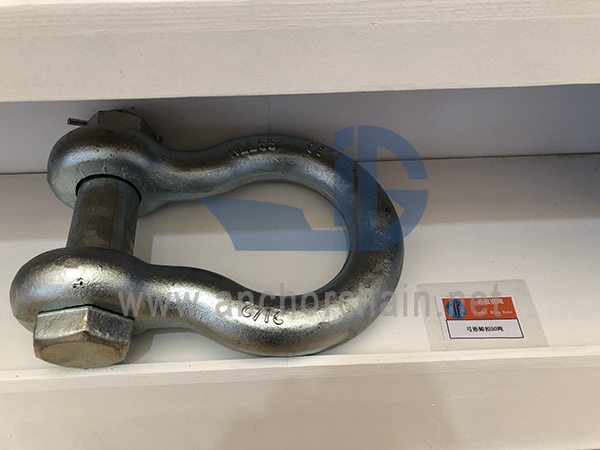Ensuring Safety in Lifting and Rigging: Understanding Bow Shackle Safety Considerations and Load Limits
2024-07-03
Bow shackles are essential components in lifting and rigging operations, providing secure connections for various equipment and loads. However, to ensure safe and efficient use, it's crucial to understand the safety considerations and load limits associated with bow shackles. In this blog, we'll explore these important factors to help you navigate their use in lifting and rigging applications.
Understanding Bow Shackles
Bow shackles, characterized by their bow-shaped body and pin or bolt closures, are designed to handle heavy loads and withstand rigorous conditions. They are commonly made from materials such as alloy steel, stainless steel, or galvanized steel, each offering specific strengths and corrosion resistance properties suitable for different environments.
Safety Considerations
1. Inspection and Maintenance
Regular inspection and maintenance of bow shackles are essential to ensure their safe operation. Before each use, inspect the shackle for signs of wear, deformation, cracks, or corrosion. Ensure that the pin or bolt closure is securely fastened and that the shackle body is free of damage. Replace any worn or damaged shackles immediately to prevent failures during lifting operations.
2. Proper Loading and Alignment
When using bow shackles, it's crucial to align the load correctly with the shackle's axis. Misalignment can lead to side-loading, which significantly reduces the shackle's strength and increases the risk of failure. Ensure that the load is evenly distributed across the shackle's bow to maintain its intended load-bearing capacity.
3. Avoiding Overloading
Each bow shackle is rated for a specific working load limit (WLL) and a minimum breaking load (MBL). The working load limit indicates the maximum load that the shackle can safely lift or hold under normal conditions. Exceeding the WLL can compromise the shackle's integrity and lead to catastrophic failure. Always know and adhere to the WLL specified by the manufacturer for the specific shackle being used.
4. Environmental Conditions
Consider the environmental conditions in which the bow shackle will be used. Factors such as temperature extremes, exposure to chemicals, and presence of abrasive materials can affect the shackle's performance and durability. Choose shackles made from materials that are suitable for the specific environmental conditions to ensure longevity and reliability.
Load Limits
Working Load Limit (WLL)
The Working Load Limit (WLL) of a bow shackle is the maximum load that can be applied under normal working conditions without risk of failure. It is determined by the manufacturer and is typically marked on the shackle. Always refer to the manufacturer's specifications to determine the appropriate WLL for your lifting or rigging application.
Minimum Breaking Load (MBL)
The Minimum Breaking Load (MBL) of a bow shackle is the load at which the shackle will fail catastrophically. It is significantly higher than the WLL and represents the ultimate strength of the shackle. While the MBL is important for understanding the shackle's capabilities, it should never be used as the maximum working load limit.
Conclusion
Bow shackles are invaluable tools in lifting and rigging applications, providing secure connections and facilitating safe handling of heavy loads. By understanding and adhering to safety considerations such as regular inspection, proper loading alignment, avoiding overloading, and knowing load limits (WLL and MBL), users can mitigate risks and ensure the safe and effective use of bow shackles in their respective industries. Prioritizing safety not only protects personnel and equipment but also enhances operational efficiency and reliability in lifting and rigging operations.



